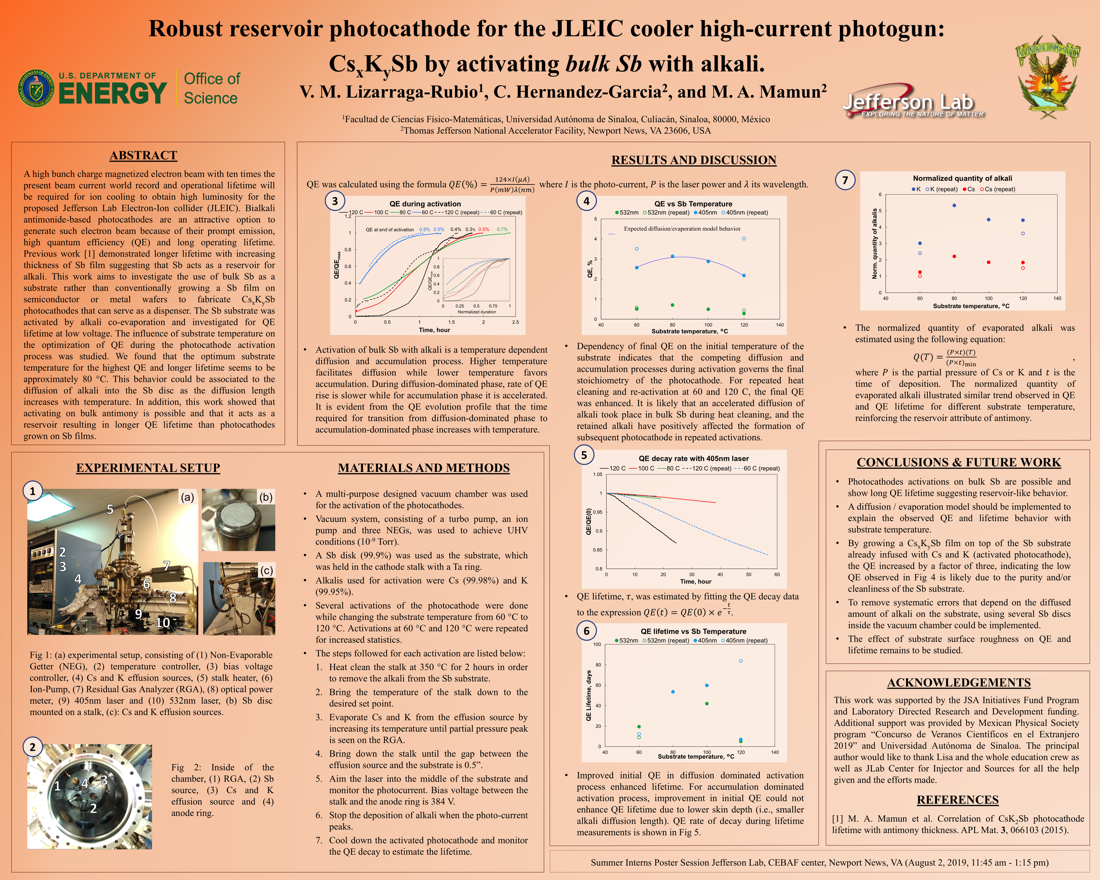Undergraduate Research at Jefferson Lab
Robust Reservoir Photocathode for the JLEIC Cooler High-Current Photogun: CsxKySb by Activating Bulk Sb with Alkali
Student: Víctor M. Lizárraga-Rubio
School: Universidad Autónoma de Sinaloa
Mentored By: Carlos Hernandez-Garcia
A high bunch charge magnetized electron beam with ten times the present beam current world record and operational lifetime will be required for ion cooling to obtain high luminosity for the proposed Jefferson Lab Electron-Ion collider (JLEIC). Bialkali antimonide-based photocathodes are an attractive option to generate such electron beam because of their prompt emission, high quantum efficiency (QE) and long operating lifetime. Previous work demonstrated longer lifetime with increasing thickness of Sb film suggesting that Sb acts as a reservoir for alkali. This work aims to investigate the use of bulk Sb as a substrate rather than conventionally growing a Sb film on semiconductor or metal wafers to fabricate CsxKySb photocathodes that can serve as a dispenser. The Sb substrate was activated by Cs and K co-evaporation and investigated for QE lifetime at low voltage. The influence of substrate temperature on the optimization of QE during the photocathode activation process was studied. We found that the optimum substrate temperature was 120 °C as activations done at this condition showed the highest QE and lifetime. This behavior is associated to the diffusion of alkali into the Sb disc as the diffusion length increases with temperature. In addition, this work showed that activating on bulk antimony is possible and that it acts as a reservoir resulting in longer QE lifetime than photocathodes grown on Sb films.

Citation and linking information
For questions about this page, please contact Education Web Administrator.
